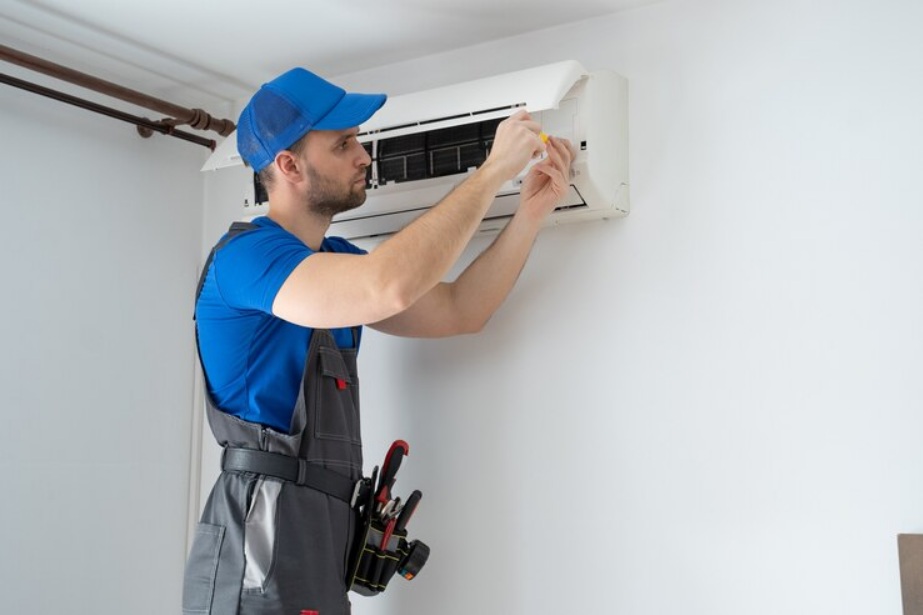Getting ready for AC installation in your West Jordan home involves more than picking out a new unit. Without the right preparation, it can lead to unexpected delays, extra costs, or headaches for your household. Whether you’re upgrading an older system or installing air conditioning in your home for the first time, a clear plan makes a big difference.
By taking small steps before your scheduled installation, you give technicians the space and information they need to do their work efficiently. You also help avoid issues that could affect long-term performance. Smoother installation means less disruption for your family and faster, more reliable comfort during the hottest weeks of the year.
Evaluate Your Current HVAC System
Before installation begins, it’s worth taking the time to understand what’s already in place. Your existing HVAC system, including components like the ductwork, thermostat, or ventilation system, will influence what type of AC unit is best and whether additional parts need upgrades too.
For example, if you’re replacing an old AC that’s been struggling for years, there may be hidden issues in the ductwork such as leaky joints or areas with poor airflow. Installing a new unit without addressing existing problems can limit the performance of the new system. That’s why a home evaluation should look at more than just the AC unit itself.
To help with this, try the following:
– Check for any signs of uneven cooling or weak airflow in specific rooms
– Note any areas of the house that feel more humid or warmer than others
– Review your service history if available. Frequent repairs might signal that deeper system upgrades are needed
– See if your thermostat responds accurately or if there’s a delay when adjusting temperatures
– Make sure vents and returns are clean and not blocked by furniture or other objects
This walkthrough gives technicians a better starting point. It also helps them determine if your home’s setup is compatible with newer AC models. Bringing up any known system quirks or problems early can prevent rework and installation delays.
Home Preparations for Installation
Once you know your system’s condition, turn attention to preparing your home for AC installation day. This part often goes overlooked but plays a key role in reducing stress and making sure things go as scheduled.
Start with the basics around the work area:
– Clear a pathway indoors and outdoors. Remove anything that could block access to the AC unit, such as patio furniture, gardening tools, or storage bins
– Unlock gates or doors that lead to utility areas to save time
– Remove wall décor or room items near existing vents that installers may need to work around
Think about safety too. If you have kids or pets, set up a temporary space for them away from the work zone. This helps them avoid getting startled by tools or noise during installation.
Since AC installation happens during warm seasons, having a plan for indoor comfort helps as well. If your current system is fully shut down, aim to do the installation early in the day. Open windows in shaded areas or use temporary fans in closed rooms to stay more comfortable while installation is underway. Preparing chilled drinks or light meals ahead of time can minimize the need to use heat-producing appliances like the oven during the process.
These simple steps free up the workspace, reduce interruptions, and help the process move quicker and more safely. Taking time to prepare now means enjoying that cool indoor air sooner.
Scheduling and Coordination
Once your home is ready for installation, the next step is figuring out the right time to schedule the work. Summer in West Jordan can bring steady heat, and long delays without a working AC can become uncomfortable fast. Choosing the right day for AC installation isn’t just about what works for your calendar. It’s also about making sure you’re available for questions and quick decisions if anything unexpected comes up.
Reserve a day where you or another adult in the home can be present for the full day. This keeps communication clear and avoids delays if the installers need access to locked areas or want to confirm certain details. You’ll also want to avoid planning installation on days when major home activities are scheduled, like a backyard event or move-in day for new furniture.
There’s also value in asking what time frame the technicians plan to operate within. While many installations are completed in one day, more complex systems could stretch into a second. Have a basic backup plan ready if indoor spaces become less comfortable during the installation.
Here are a few smart scheduling tips to keep in mind:
– Ask for an early morning appointment, when outdoor temperatures are cooler
– Avoid scheduling on holidays or weekends to sidestep emergency pricing and limited availability
– Let neighbors know if installers will need shared access, like a side yard or alleyway
– Consider whether someone can help you watch pets or kids that day, letting you focus on any installation updates without distractions
Simple communication and planning can keep the installation timeline on track and reduce surprises during the process.
Post-Installation Checklist
After the AC unit is installed, it’s easy to assume the work is fully done. But a few small checks can go a long way in making sure everything was installed properly and is ready for use.
First, walk through the system with the technician once the installation is complete. Ask for a quick breakdown on how the new thermostat works, what maintenance steps you’ll be responsible for, and how to spot signs that something could be off in the future. This also helps prevent unnecessary service calls later.
Next, check that each room is receiving airflow and cooling the way it should. Uneven cooling is sometimes a signal that ducts need to be re-balanced or that a vent was missed during installation. If you notice air isn’t reaching certain areas, speak up right away.
To keep the new system in good condition, consider this post-installation checklist:
1. Confirm that the thermostat is syncing correctly with your system
2. Make sure each supply and return vent has steady airflow
3. Ask about recommended filter changes and how often to schedule them
4. Write down any model numbers, warranty details, and contact info for future maintenance
5. Set a reminder on your calendar for seasonal checkups or a follow-up visit
These small steps help protect the investment you’ve made while boosting your home’s cooling performance.
Get the Most Out of Your AC Installation in West Jordan
Taking the time to plan ahead makes a big difference when it comes to AC installation in West Jordan. With proper prep, you don’t just get more control over the process. You also set the foundation for a more efficient system that can last for years. It also helps reduce noise, temperature swings, and high utility bills that can follow a rushed or incomplete setup.
Whether you’re working with a technician for a full replacement or a system upgrade, a smooth installation begins with a home that’s prepared and a homeowner who understands what to expect. Once the new AC is installed, you should notice better comfort throughout the home with more stable temperatures, especially during the peak of summer. Even little things, like better air circulation or a quieter operation, can make you feel confident that the time and money were well spent.
If you are ready to enjoy a well-coordinated AC installation that sets your home up for lasting comfort, consider how AC installation in West Jordan can help smooth out the process and keep your cooling schedule on track. Keystone Heating and Air understands homeowners face many challenges when preparing for an upgrade, and our professionals are here to work with you every step of the way. For a quick estimate or to book a service visit, please contact us today.






